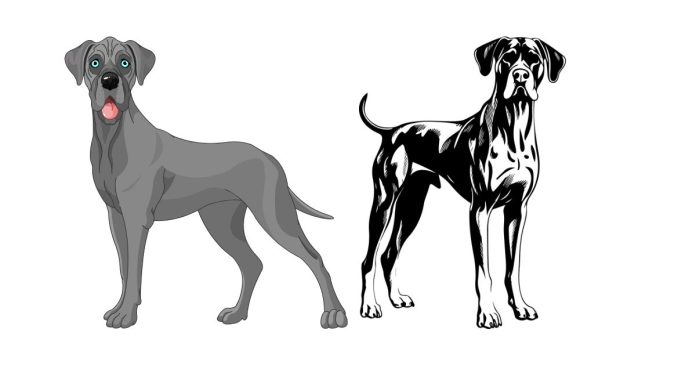Great Danes are known for their impressive size, gentle nature, and regal appearance. But if you’re thinking about adopting one of these majestic dogs, you might be wondering: how long do Great Danes live, on average? Let’s take a look at their lifespan and factors that influence how long these lovable giants typically live.
Average Lifespan of a Great Dane
On average, Great Danes live between 7 to 10 years. This is relatively short compared to smaller dog breeds, many of which can live well into their teens. The short lifespan of Great Danes is partly due to their large size, which is often linked to faster aging.
Why Do Great Danes Have a Shorter Lifespan?
The lifespan of a dog is influenced by a variety of factors, including genetics, size, and overall health. Here’s why Great Danes generally have a shorter lifespan:
- Size: Larger dog breeds, like the Great Dane, tend to age more quickly than smaller breeds. Their hearts and organs have to work harder to support their size, leading to a higher risk of health issues as they get older.
- Genetics: Like all dog breeds, the genetics of a Great Dane play a significant role in determining their lifespan. Some genetic conditions, such as heart disease (particularly dilated cardiomyopathy) and hip dysplasia, can affect their overall health and longevity.
- Health Issues: Great Danes are prone to certain health problems, including joint issues, heart problems, and bloat (gastric torsion). These health challenges can shorten their life expectancy if not properly managed.
How to Help a Great Dane Live a Longer, Healthier Life
While you can’t change the genetics or size of your Great Dane, there are several steps you can take to improve their quality of life and potentially extend their lifespan:
- Regular Vet Check-ups: Routine visits to the veterinarian are essential for catching any health issues early. Regular screenings for heart disease, joint problems, and other conditions are crucial.
- Proper Diet and Exercise: A balanced diet and regular exercise are key to maintaining a healthy weight and preventing obesity, which can put extra strain on a Great Dane’s joints and heart.
- Preventive Care: Taking steps to prevent bloat (a common and serious condition in large breeds) and ensuring your dog isn’t subjected to excessive stress or physical exertion can help keep them healthy.
- Comfortable Living Space: Great Danes are large dogs, and their physical comfort matters. Providing them with a comfortable bed and enough space to move around without strain can improve their quality of life.
While Great Danes typically live between 7 and 10 years, their shorter lifespan can be managed with proper care. By keeping up with regular veterinary visits, providing a healthy diet and exercise, and addressing potential health issues early, you can ensure that your beloved Great Dane enjoys as many happy and healthy years as possible.
So, while their time with us may be brief, the joy and love that a Great Dane brings to a household are truly priceless.


